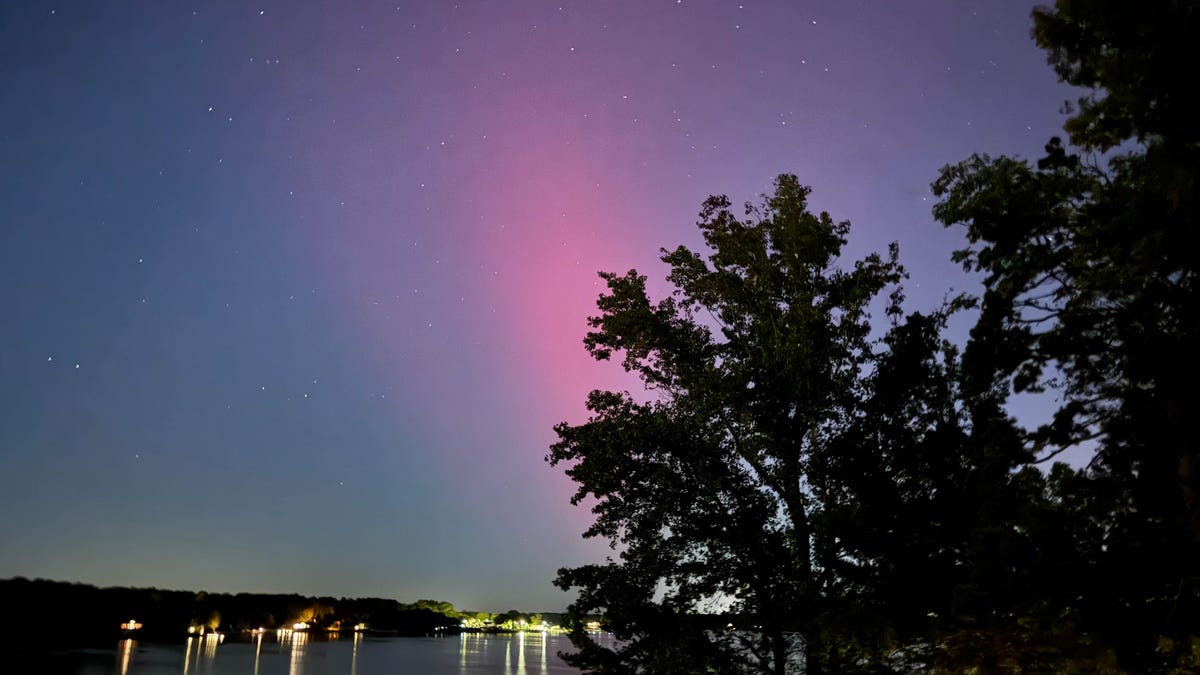Skygazers in the northern region of the US and Canada might catch a glimpse of the Northern Lights Wednesday night and into Thursday. The NOAA Space Weather Prediction Center issued a G3 (strong) geomagnetic storm watch for April 16, when plasma ejected from the sun is expected to reach Earth’s magnetic field. Minor geomagnetic storm conditions are likely to carry on until April 17, the agency reported.
The colorful lights splashed across the night sky are caused by geomagnetic storms in our atmosphere, and the SWPC pays attention to when these might occur. Geomagnetic storms in the atmosphere can arise from a cosmic phenomenon called coronal mass ejections. These surging ejections of solar wind come from the corona, the sun’s outermost layer. CMEs consist of plasma and magnetic fields and can take hours or days to reach Earth.
When CMEs arrive, they cause disturbances in our atmosphere by disrupting our planet’s magnetic field. This creates geomagnetic storms. Coming sooner than expected, the first CME arrived earlier on Tuesday, spaceweather.com reported.
NOAA space weather forecaster Shawn Dahl told CNET there’s a chance for G4 (severe) levels, should the magnetic field of the CME become favorable.
“By this, I mean the magnetic field of the CME needs to be opposite that of Earth’s to get a good geomagnetic reaction,” Dahl said. “Think of it like opposite polarity magnets that attract.”
Where can you see the aurora?
The NOAA’s aurora forecast for April 16, 2025.
Most places in the US won’t have an opportunity to see the aurora borealis, but people in the most northern regions (especially Alaska) and Canada might get a chance to see the lights. However, clouds, rain and snow might make it hard to see.
For the best chance of seeing it, according to Accuweather, you’ll need to have an unobstructed view of the northern horizon and be using long-exposure photography to capture images of the phenomenon.
The Northern Lights have certain times of year when they’re more likely to be observed. You have the best chance of catching aurora borealis in March, April, September and October, as these are the months near the spring and autumn equinoxes, when the Earth’s position to the sun is ideal for geomagnetic storms.
“The equinoxes are the transition points between which hemisphere is tilted toward the sun,” Shannon Schmoll, director of the Abrams Planetarium, told CNET last month. “At this point, the Earth’s magnetic field is at a more favorable angle, closer to perpendicular, that allows easier interaction of the charged solar particles with the Earth’s magnetic field and atmosphere.”
April is a good month for watching the Northern Lights because we’re at Solar Maximum — the period of the highest solar activity in the 11-year solar cycle.
“During this time, we expect to see more sunspots, and therefore, there’s a higher chance of high-impact space weather occurring on any given day,” Elsayed Talaat, director of the Office of Space Weather Observations at the National Oceanic and Atmospheric Administration, said last October.
So, if you live where the aurora borealis might be visible tonight, make sure to head away from city lights and check out the night sky to the north.
Read the full article here


